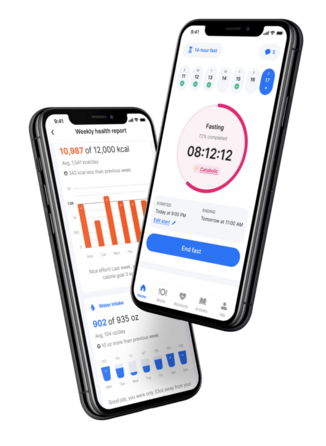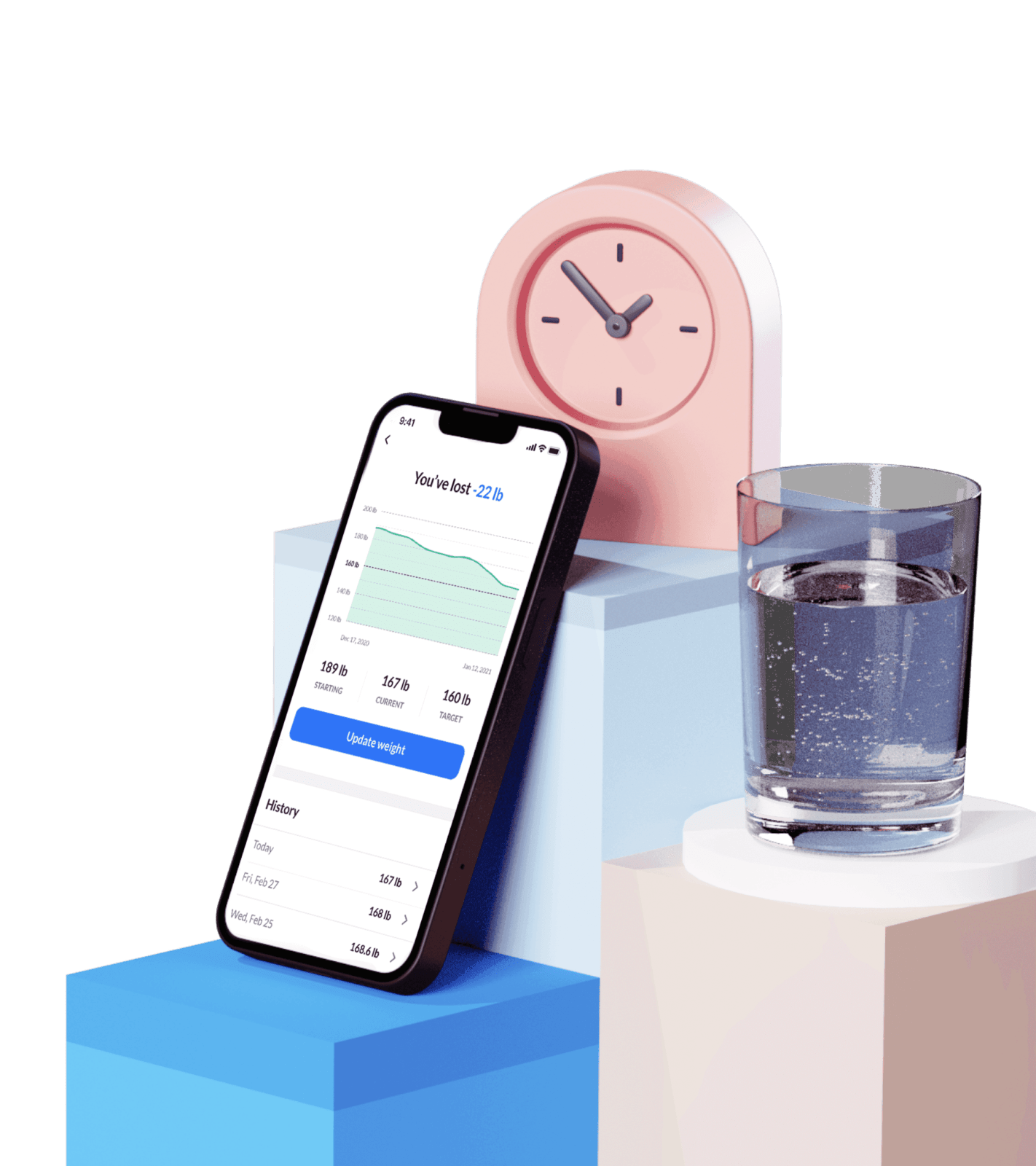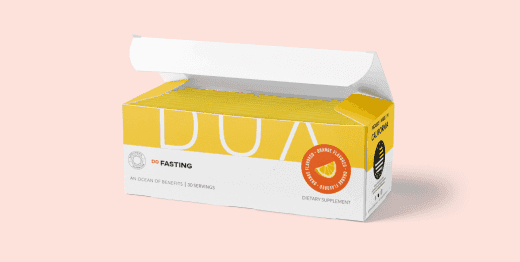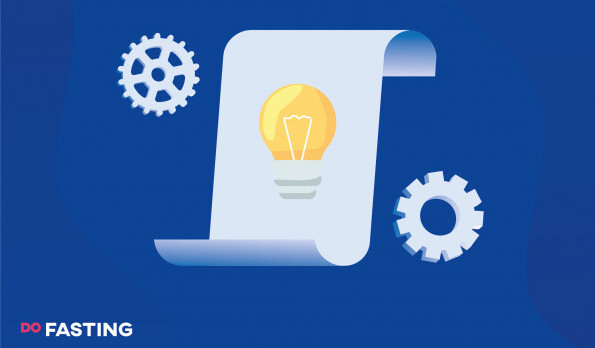Contents
What Is a Clean Fast?
Clean fasting is a type of intermittent fasting, famed for its ability to help you lose weight by triggering the body’s stored fat-burning potential through a cyclical eating window and fasting window.
While every fasting window during an intermittent fasting plan does require calorie restriction to reduce the insulin response and lose weight, the idea of “clean” fasting takes it one step further: zero calories during a fasting period.
Essentially, you are allowed to consume only water, plain tea, and black coffee. This is to avoid calories or carbs from entering your system and raising blood glucose levels.
According to Dr. Jason Fung, a proponent of clean fasting, these insulin levels rise when carbohydrates are consumed, which impedes the metabolic process of losing weight.
Clean fasting pushes the body into a complete metabolic switch and state of ketosis, where stored fat is burned for energy instead of sugar, and the longer you go without food and calorie-free, the more weight loss results you’ll see.
Take a
1-minute quiz
and discover how much weight you can lose with DoFasting!

What Are Clean Fasting Benefits?
There are many health benefits of the intermittent fasting lifestyle, particularly when you work clean fasting into your schedule.
From losing weight to a better insulin response, regulating blood sugar to lowering the risk of cardiovascular disease, here are some of the key health benefits of clean intermittent fasting.
Effective Fat Loss
As previously mentioned, when blood insulin levels are reduced, the body’s metabolism switches from using sugar as fuel to fat burning. The lower your insulin levels the more fat is burned, due to the process called lipolysis which targets fat cells.
Plus, not only does a zero-calorie clean fast spark fat loss and weight loss, but burning fat also gives you more energy of better quality.
Fasting clean is a way to achieve successful fat reduction and weight loss during intermittent fasting plans, as long as you don’t consume anything that causes insulin spikes.
Uninterrupted Autophagy
Autophagy in the intermittent fasting process refers to the state where insulin resistance lowers and the body begins to release stored glucose safely from the liver. Additionally, this is the stage where cellular rejuvenation can happen on a molecular level, as the cells detox themselves completely.
And, the longer you prevent the release of insulin (the body processing carbs into sugar) by clean intermittent fasting, the longer your body can stay in autophagy, uninterrupted.
Sustained HGH Production
The human growth hormone, or HGH, is responsible for many healthy body processes including fat burning, and intermittent fasting is one of the best ways to increase its function. As HGH is important for cell regeneration and growth, and for promoting healthy tissue repair, your body is better for long periods of fasting.
According to a scientific study, fasting enhances HGH secretion. This is due to the low insulin levels that come from calorie deficits and lipolysis targeting fat cells and letting the glucose pass out of the body.
So, the longer you fast and burn fat, the more essential hormones have time to regenerate your entire body!
What Can You Have During Clean Fasting?
Hydration during a clean fasting window is a must, and not only water needs to be consumed. Though not all drinks are available to you, there are some calorie-free beverages that you can enjoy.
Like during a water fast, plain water from the tap, mineral water, and sparkling water are all allowed, as they are zero-calorie. As for hot drinks, only black coffee and black tea are typically permitted, without artificial sweeteners.
That’s because drinking coffee and tea without additives contains negligible calories, not enough to affect blood glucose levels, allowing your body to still remain in a state of metabolic ketosis and fat burning.
While artificial sweeteners are not allowed, zero-calorie sweeteners technically wouldn’t break this fast, but are still not recommended either.
Even a zero-calorie sweetener like Stevia does contain some additives that could affect insulin secretion and the results of your clean fast, unlike if you drank coffee and tea black and without artificial sweeteners.
What Is Dirty Fasting?
Clean and dirty fasting are essentially different sides of the same coin of intermittent fasting for weight loss. While clean fasting promotes the idea of a zero-calorie intake, dirty fasting does allow for some calories during the fasting period.
The key to controlling your intake during dirty fasting is keeping what you consume below 50 calories. From bone broth to a little cream or MCT oil in your coffee, minimal amounts of low-calorie ingredients are permitted during dirty intermittent fasting.
And while this might seem like “cheating” on your fasting window, keeping calories below 50 does not actually vastly increase insulin levels.
More fat might ultimately be burned in a clean fast vs dirty fast, but in the end, both are effective methods for weight loss, as long as you still stick to the rules.
What Can You Have During Dirty Fasting?
Because you have 50 calories of intake to experiment with during this type of intermittent fasting, dirty fasting allows a bit more variation in your day, still with the exception of food.
That includes water with lemon slices, herbal teas, green tea, bone broth, and even bulletproof coffee with MCT oil or almond milk.
Of course, you should still drink water, but some sugar-free flavored water brands are also an option, as well as some diet soda.
Other beverages and sweeteners allowed during dirty fasting include the following, all with nutritional values under 50 calories:
- Agave syrup, 1 tsp (Calories: 14; Carbs: 4g).
- Almond milk, 6 ounces (Calories: 30; Carbs: 1g).
- Aspartame, 1 packet (Calories: 0; Carbs: 0g).
- Bone broth, 1 cup (Calories: 35; Carbs: 2g).
- Butter, 7 grams (Calories: 50; Carbs: 0g).
- Coke Zero, 1 can (Calories: 1; Carbs: 0g).
- Cream, 2 tbsp (Calories: 30; Carbs: 0.5g).
- Honey, 1 tsp (Calories: 20; Carbs: 17g).
- Lemon, juice of 1 whole (Calories: 12; Carbs: 4g).
- MCT oil, 1 tsp (Calories: 35; Carbs: 0g).
- Splenda, 1 packet (Calories: 3.5; Carbs: 1g).
- Stevia, 1 packet (Calories: 0; Carbs: 0g).
- Sugar-free chewing gum, 1 stick (Calories: 5; Carbs: 2g).
- Whole milk, 2 tbsp (Calories: 18.5; Carbs: 1.5g).
- 2% milk, 1 tbsp (Calories: 15.3; Carbs: 1.5g).
Is Dirty Fasting Effective?
Dirty fasting certainly is still an effective means of burning fat and gaining health benefits, but the weight loss results from a clean fast vs dirty fast are different.
A dirty fast still allows your body to enter a calorie deficit and burn fat that way, but the insulin fluctuations associated with drinking diet soda or green tea— for example— are sometimes enough to push you out of full ketosis and the optimal stage of intermittent fasting for weight loss goals.
Clean fasting is the best way to put your body into a metabolic switch, reduce insulin levels, burn fat, and keep it going.
But for anyone with a busy schedule or who needs to ease themselves into the process of fasting for completely calorie-free stretches, dirty fasting is still a great way to prime your metabolism and lose weight by cutting calories.
Clean Fast vs Dirty Fast: Which One Works Better for Weight Loss?
When it comes down to it, clean and dirty fasting are both effective for burning fat, simply because of the period of fasting and calorie deficit that both promote.
However, because dirty fasting does include more calories, it has more disadvantages to the weight loss process— affecting the ketosis, metabolic switch, and lipolysis that burns the most optimal fat stores and produces maximum long-term and big-picture health benefits.
If you want to start intermittent fasting for the best results, clean fasting is the better option.
However, because dirty fasting does allow some calories, including fats and flavorings, it’s easier for those new to intermittent fasting to feel satiated and stick to the fasting period.
In the end, whether you are fasting clean or eating under 50 calories, you will lose weight. But the best intermittent fasting benefits come from lowering your calories completely and clean fasting for success.
6 Tips on How To Be Successful When Doing Clean Fasting 650
Intermittent fasting is not easy, particularly when you restrict your food and stick to zero-calorie drinks. However, we have compiled some of the best tips to help you succeed while clean fasting and not slip off of your plan!
-
Change Your Habits Slowly
Change doesn’t happen overnight, including for weight loss. It’s okay to start slow when altering your lifestyle for the better. For example, wean off your morning coffee with sugar instead of switching immediately to only water.
Getting into intermittent fasting one meal and one fasting period at a time is perfectly valid! So, don’t feel bad if progress is slow at first, as it will undoubtedly get better (and easier) over time, as a healthier lifestyle becomes your new normal.
-
Use a Fasting App To Stay on Track
Using an app is also a great motivational tool, as it allows you to see your progress over the past few months in real-time. The DoFasting app also includes timers to notify you when eating and fasting periods are, recommendations for your overall health, and even recipes.
Plus, you can log hydration, physical activity, and calorie intakes for a better big-picture understanding. The app also includes plenty of great exercises that you can implement around fasting times to help boost your fat-burning progress even further.
Take a
1-minute quiz
and discover how much weight you can lose with DoFasting!

-
Don’t Compare Your Journey to Others
Everyone’s weight loss journey is different, and comparing yourself will just decrease your motivation for staying on track with your own intermittent fasting diet.
That being said, it’s also a good idea to have support during your journey, so try joining intermittent fasting Facebook groups or reach out to a diet buddy to have companionship along the way!
-
Avoid Processed Foods and Refined Sugar During Your Eating Time
Even when you find yourself during an eating period, it’s absolutely essential to maintain a healthy and balanced diet. Not only will it help prevent backsliding into regaining weight, but you will better fuel your body for the next period of fasting.
Instead of eating all the foods you have been craving, such as highly-processed foods and refined sugars, opt for healthy fats, protein sources, whole grains, and fibrous vegetables.
It will also help curb the hunger cravings for such “unhealthy” choices while fasting if you avoid them surrounding the fasting times!
-
Distract Yourself
Instead of going through fasting only thinking about your next meal when the eating window opens, it’s important to keep yourself distracted. Staying stuck in a mental loop only makes your appetite worse!
So, go for a walk in nature for some fresh air, meet up with a friend (and don’t go for food), or start a hobby that you have always wanted to try— the options are wide-ranging, and distracting yourself from being hungry might just lead to your new favorite activity.
-
Adjust Your Fasting Time
At the end of the day, if you must cut your fast short, it’s alright. Don’t worry about failing— even if you were fasting clean and need something with calories to get you through the afternoon, switching into dirty fasting occasionally will not make a big difference in your long-term results.
Cutting yourself some slack can sometimes be healthier for your mental well-being, instead of sticking to a very difficult task. You can always do better during the next window of intermittent fasting!
Conclusion
Intermittent fasting is great for many reasons, from a healthier lifestyle to weight loss. And how you go about it makes a difference— clean and dirty fasting are two methods for the same end goal, depending on your needs.
And for those looking to gain the most benefits and fat-burning potential, pursuing the process of fasting clean is likely your best choice. And you can be successful, too, by following some easy tips to stick to a clean fasting regimen!
Take a
1-minute quiz
and discover how much weight you can lose with DoFasting!

See how DoFasting will improve your life
Find out what works for you with this 60-sec quiz approved by our experts and get your personal revolutionary fasting assistant.
Start the Quiz
This is an evidence-based article that includes scientific citations. DoFasting’s professional writers and editors prepared the content, which a team of medical experts verified to be accurate.













